Shifting established perceptions is a tough endeavor for anyone, especiall
an organization with as many stakeholders as the University of Florida. Known
for decades as a “football school,” our team was brought on to help push them
into the top 10 in the US News and World Report rankings. To do this, we needed
to expand the conversation to include more than athletics, but not shut it out
completely. The University’s excellence touches a number of areas, and we just
needed to connect those dots for those on the outside.
Over the course of the multi-year Gator Good campaign, we featured the people
making change at a global level and those impacted by their efforts.
Each year featured a series of specific areas of focus targeted audience materials
to not only give their ambassadors new success stories to talk about but show their
peers the breadth of their impact to move the rankings needle. The result has been
a jump from #14 to #8 and now the University has its eye on top 5.
Gator Good Year 1

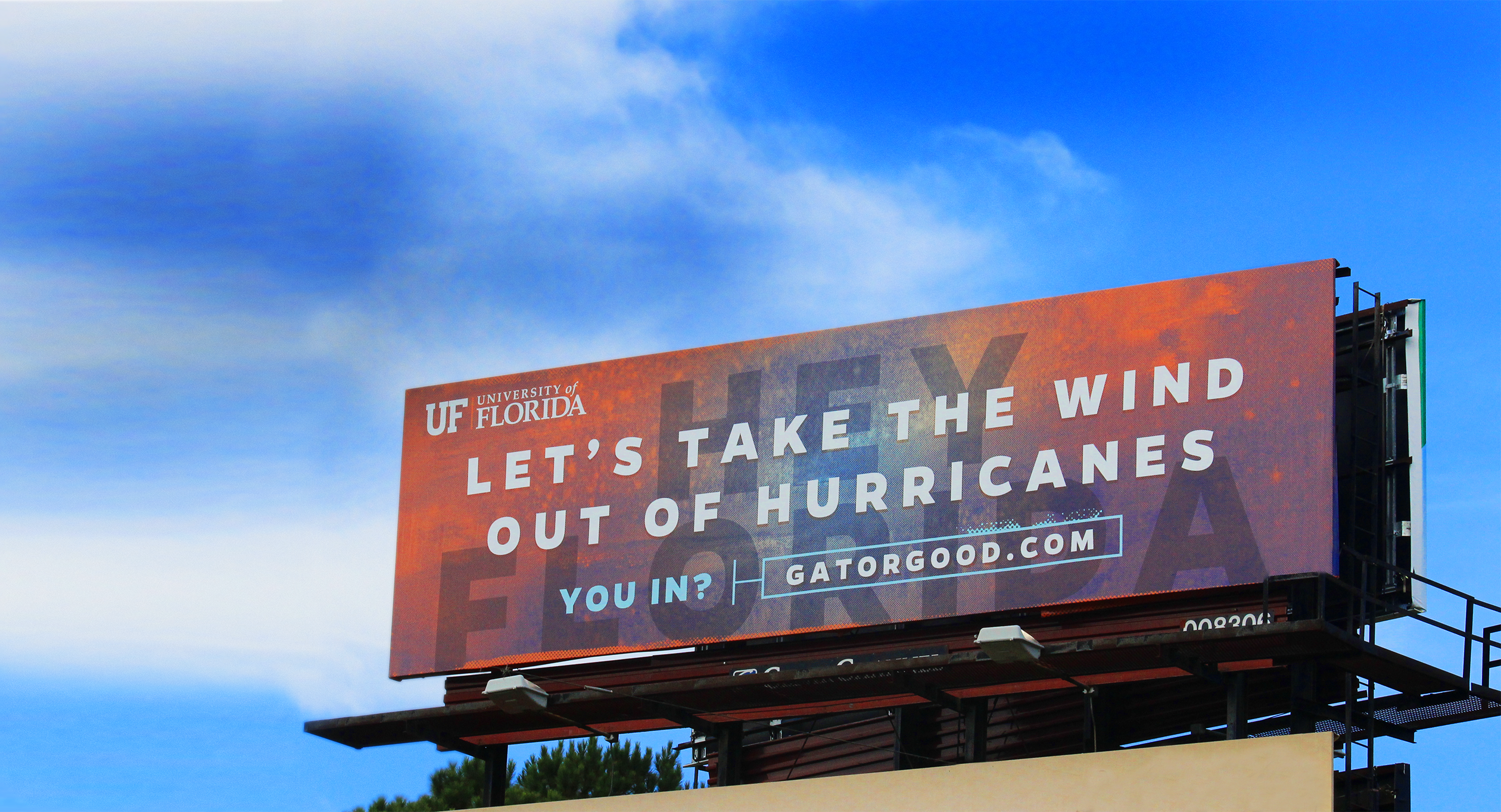
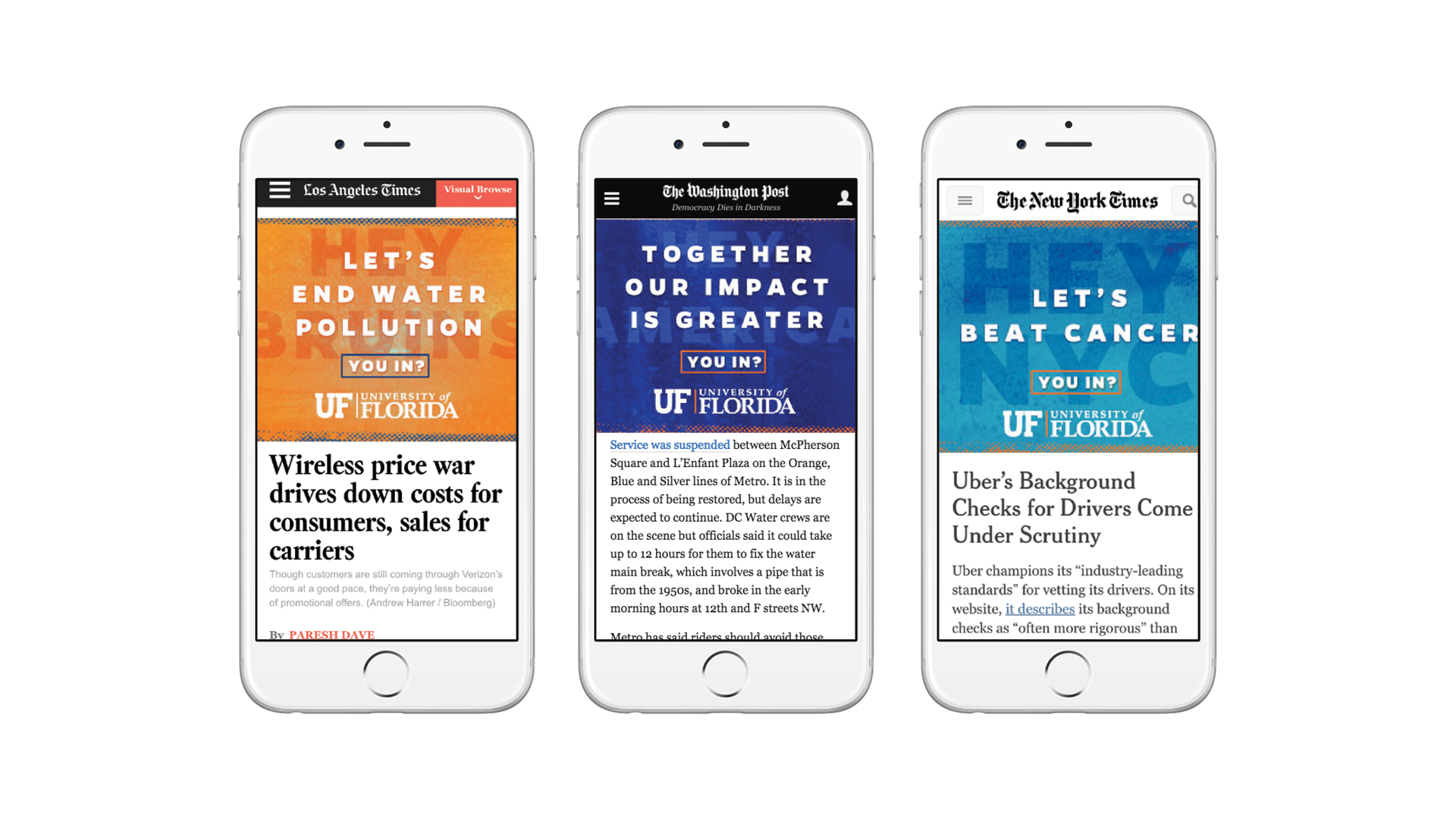
The campaigns featured multiple points of interaction, including a website
to house the stories and encourage fans to participate as part of the larger
Gator Nation network.
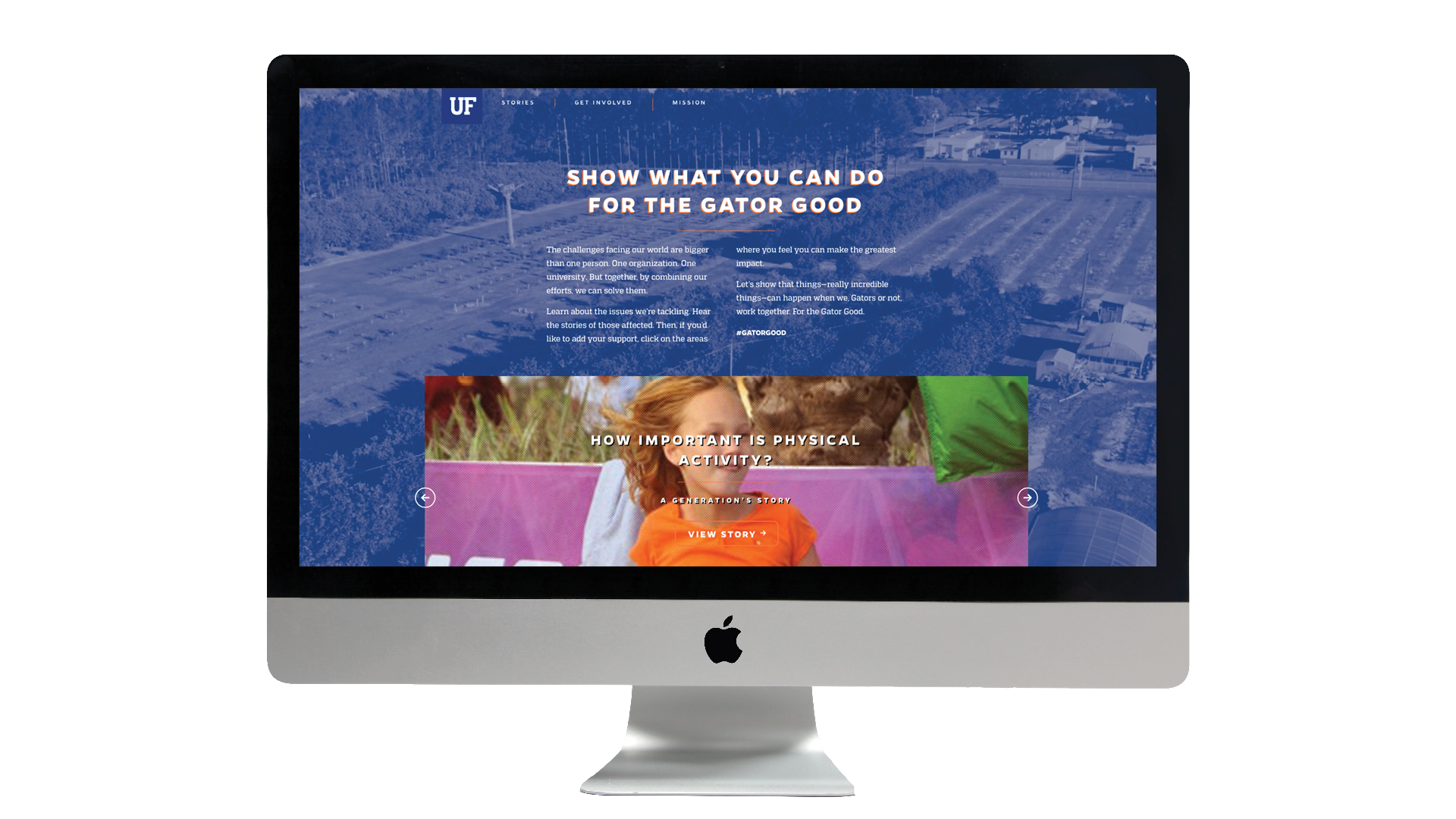
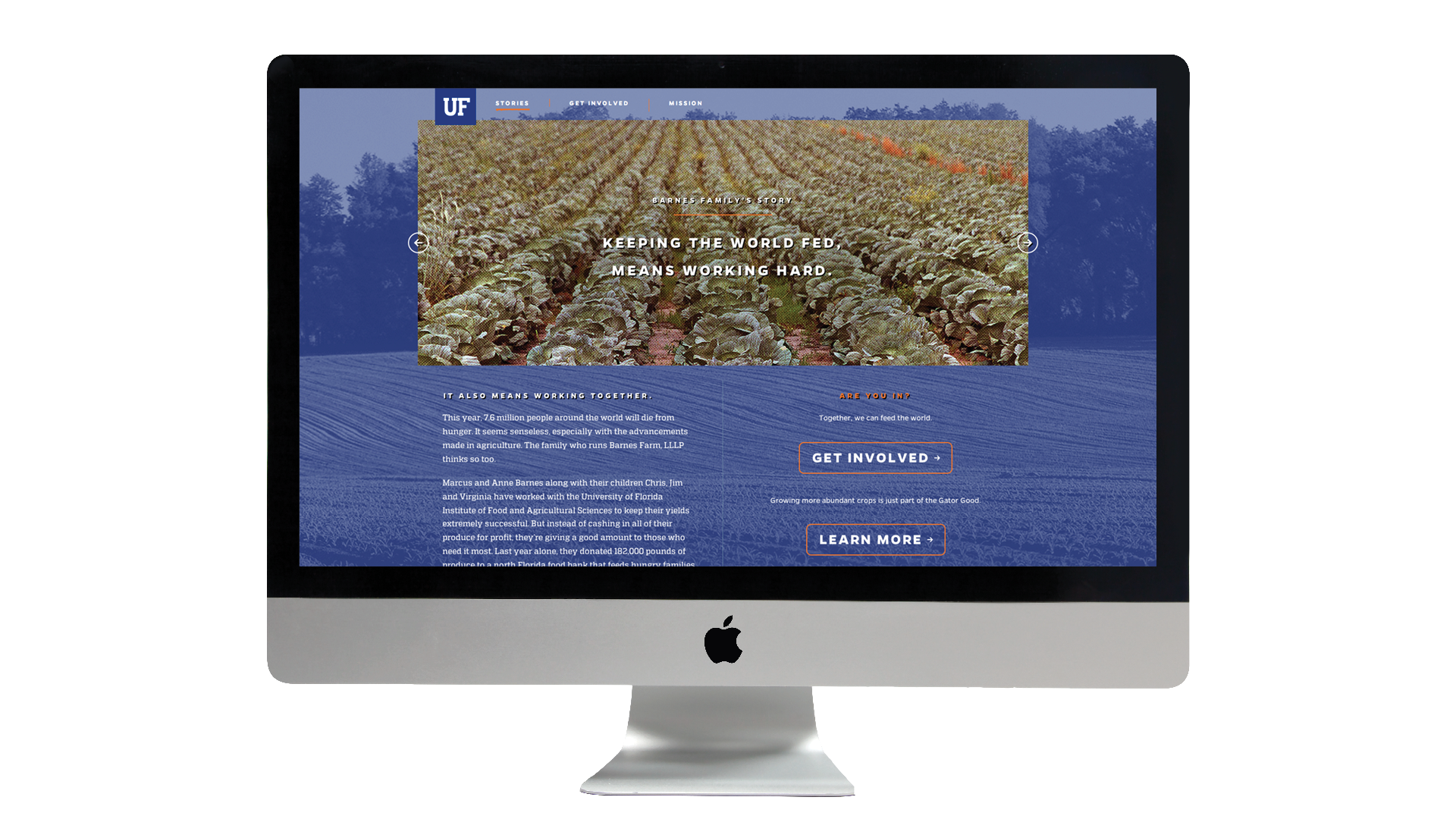
Gator Good Year 2
As each year was being crafted, further peer-specific messaging and opportunities
were developed to deepen the well of relevant content when it came time to vote.
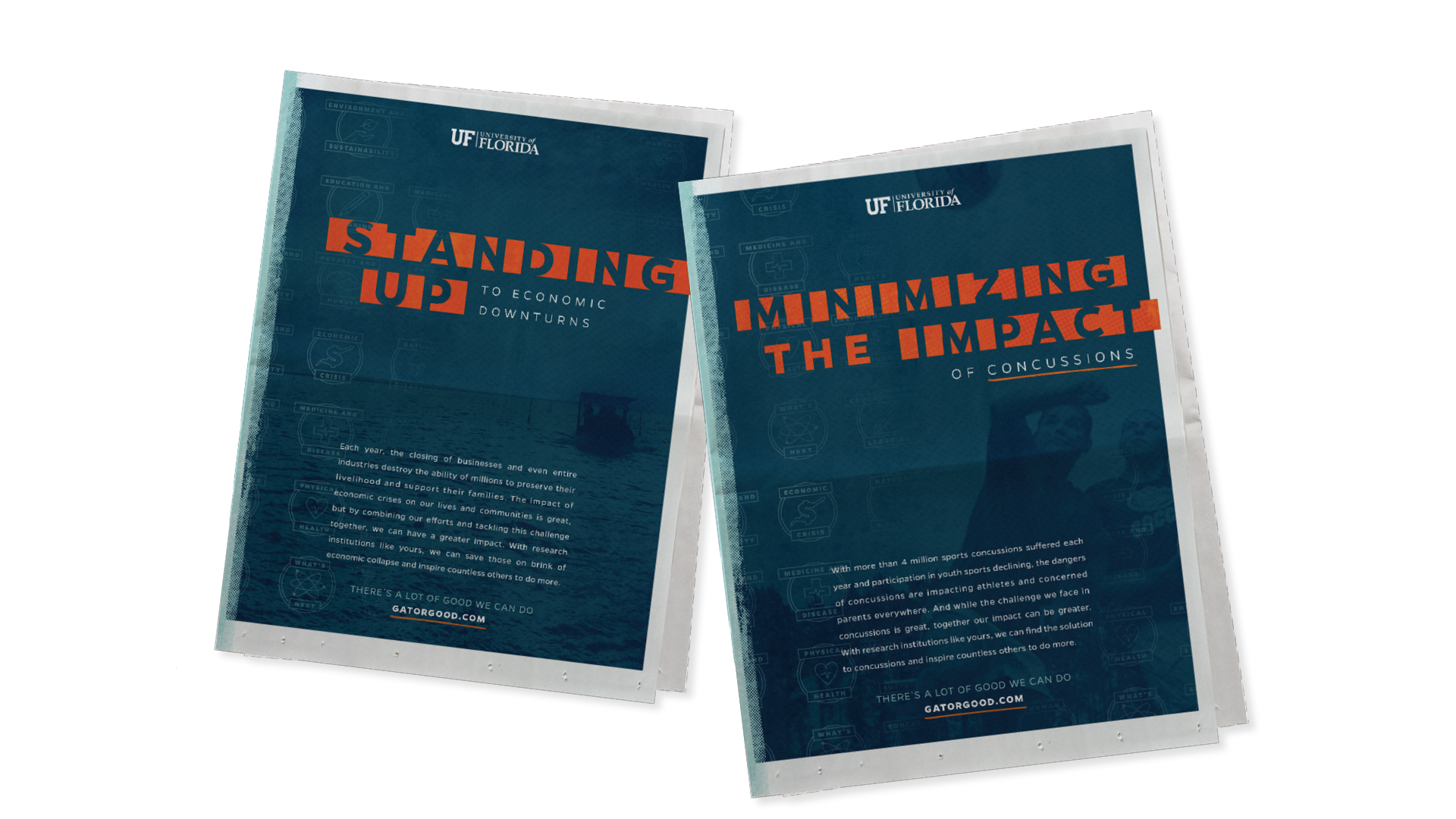
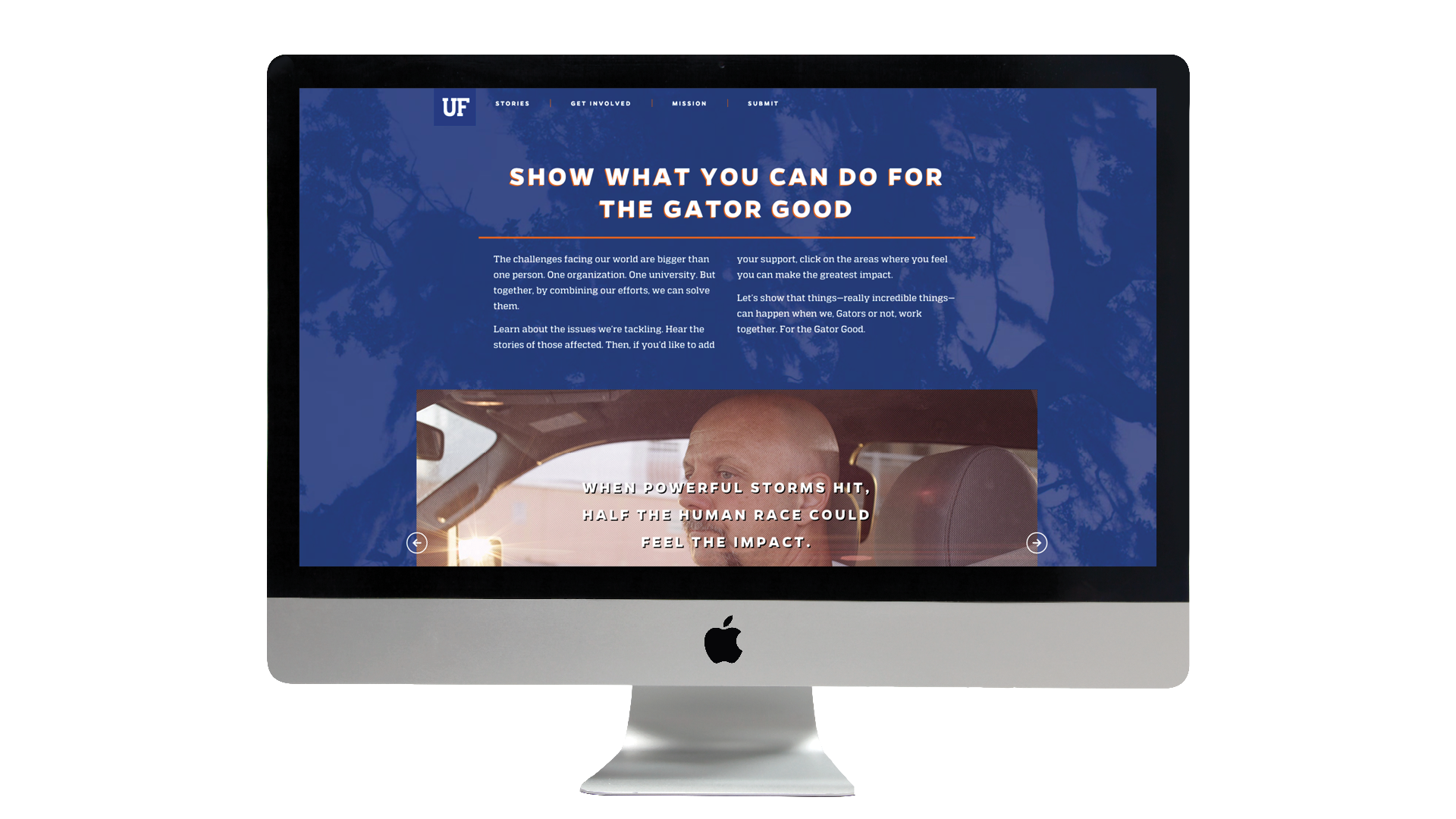
Further participation tools were included on the website and social media for the
die-hard ambassadors and others who have been affected by the University’s
people to broaden the dialogue.

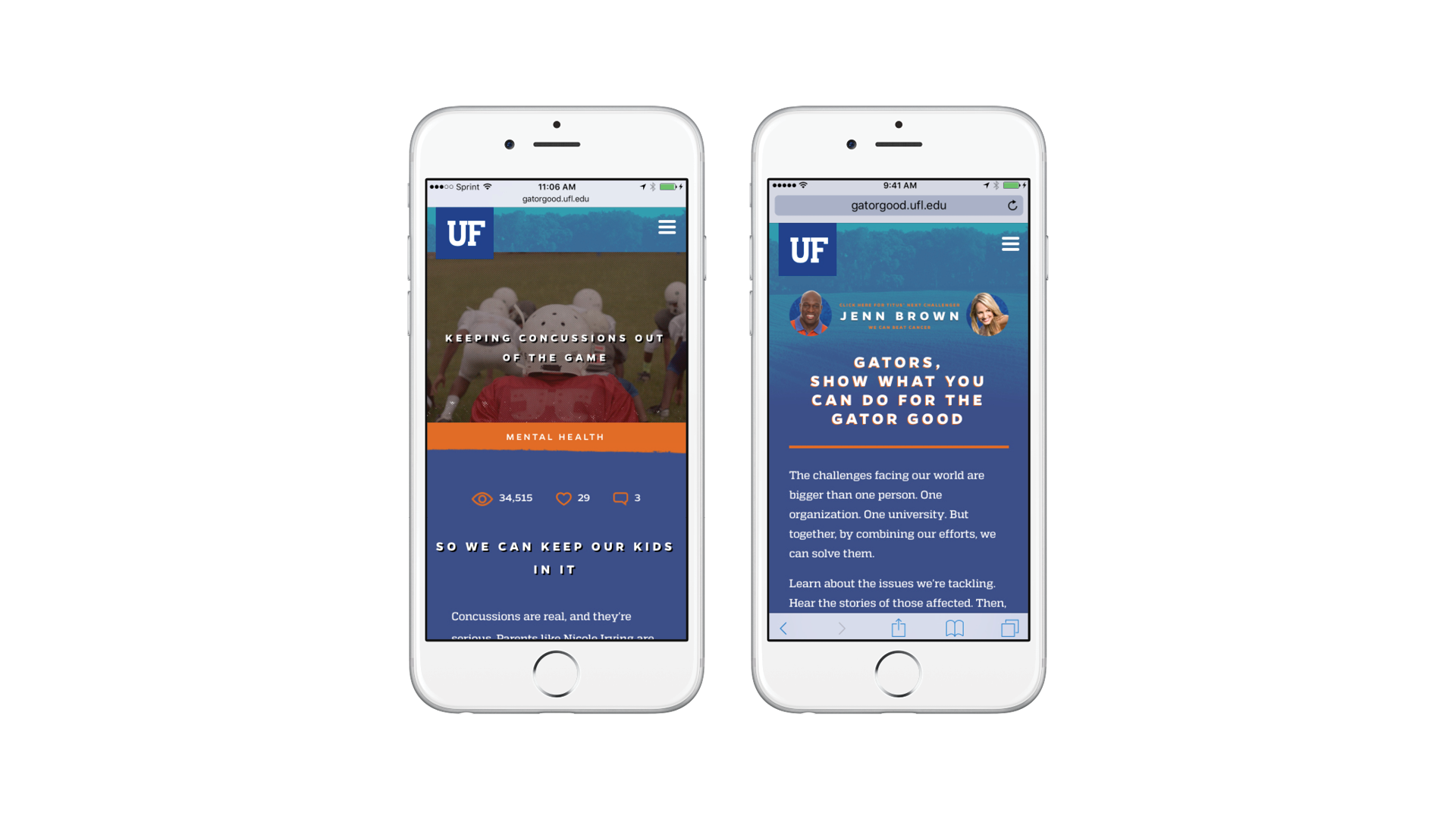
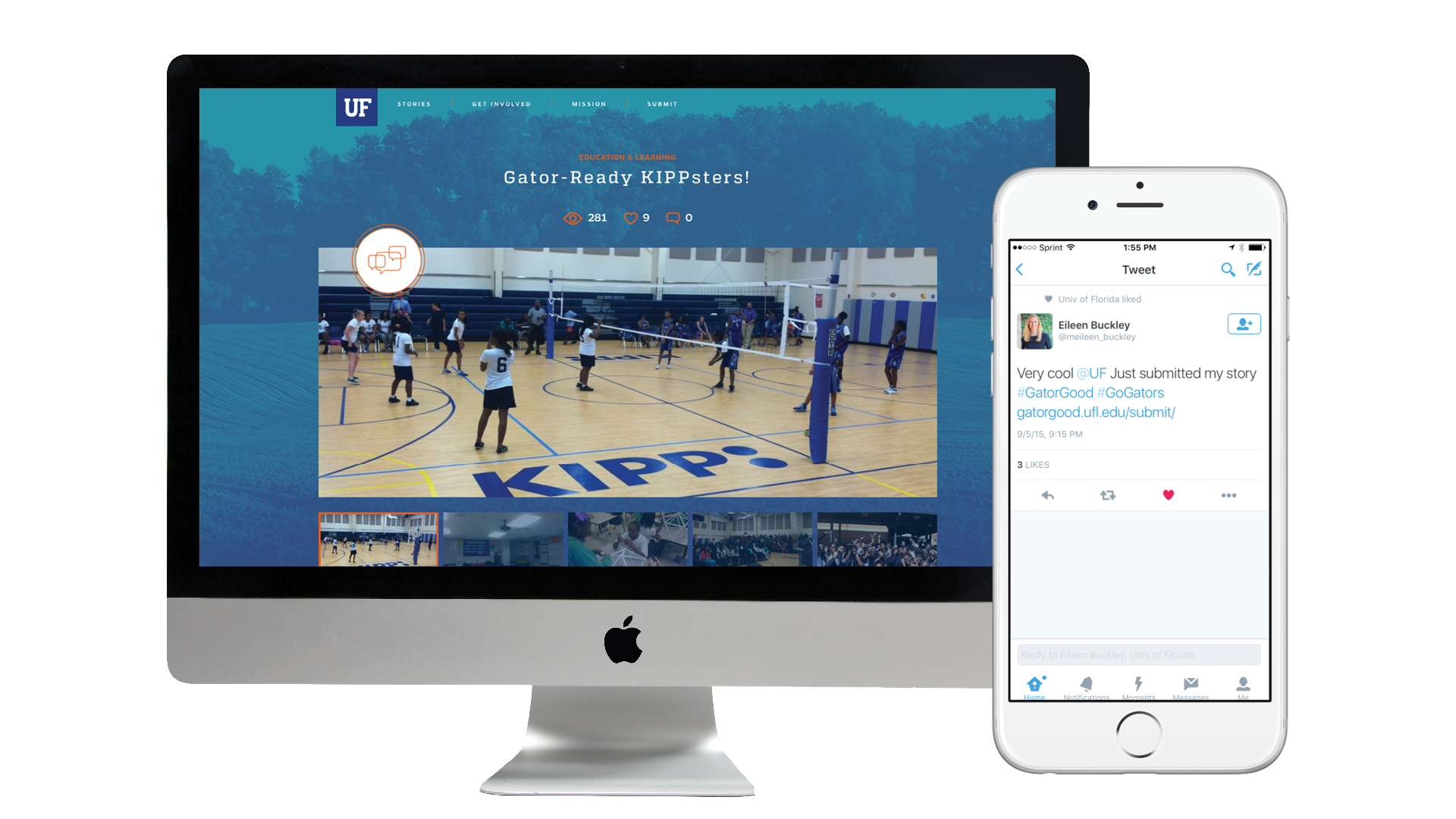
UF alumni and WWE superstar Titus O’Neil also joined the fold, having gained
notoriety for his humanitarian gestures for underserved groups. He became the
greatest Gator Good ambassador and brought along some other famous friends to
join him. The result was greater earned media impressions and engagement from
additional audiences brought in from other outlets.

Gator Good Year 3
In its third year, the aperture widened even further, with paid placements in other
university publications asking to collaborate in shared areas of specialty. This
included conference support where UF’s experts were making appearances.
Additionally the overall content theory for the campaign and website itself focused
on seeding and aggregating content from across the Internet. Rather than starting
its own conversation space, the University sought to lead the conversations where
they were already happening, again bringing a new group of constituents who
believed in the causes UF’s researchers were impacting. We not only sourced and
built all the content, but also developed the plan to connect the dots with
these existing outlets.
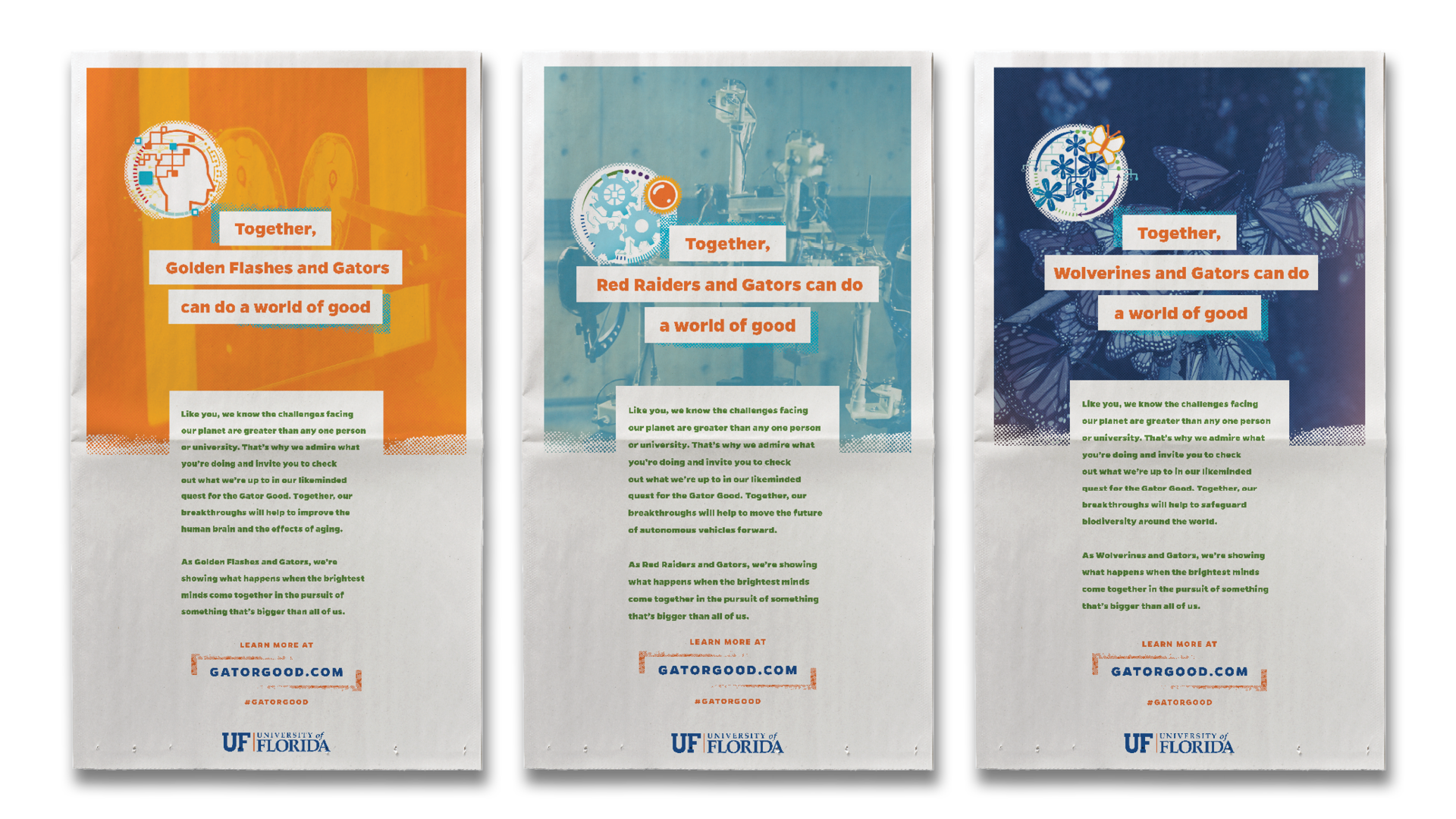
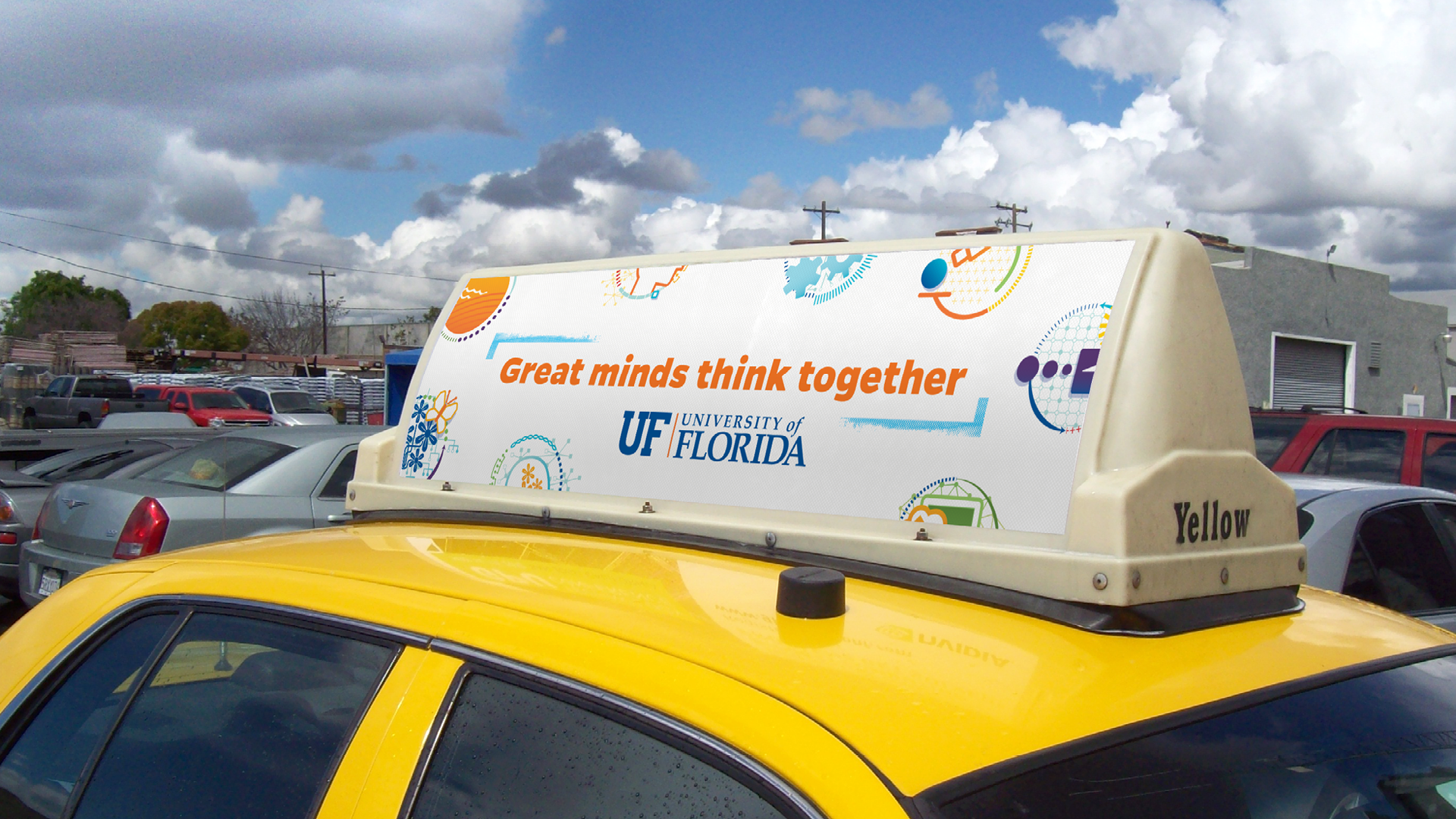
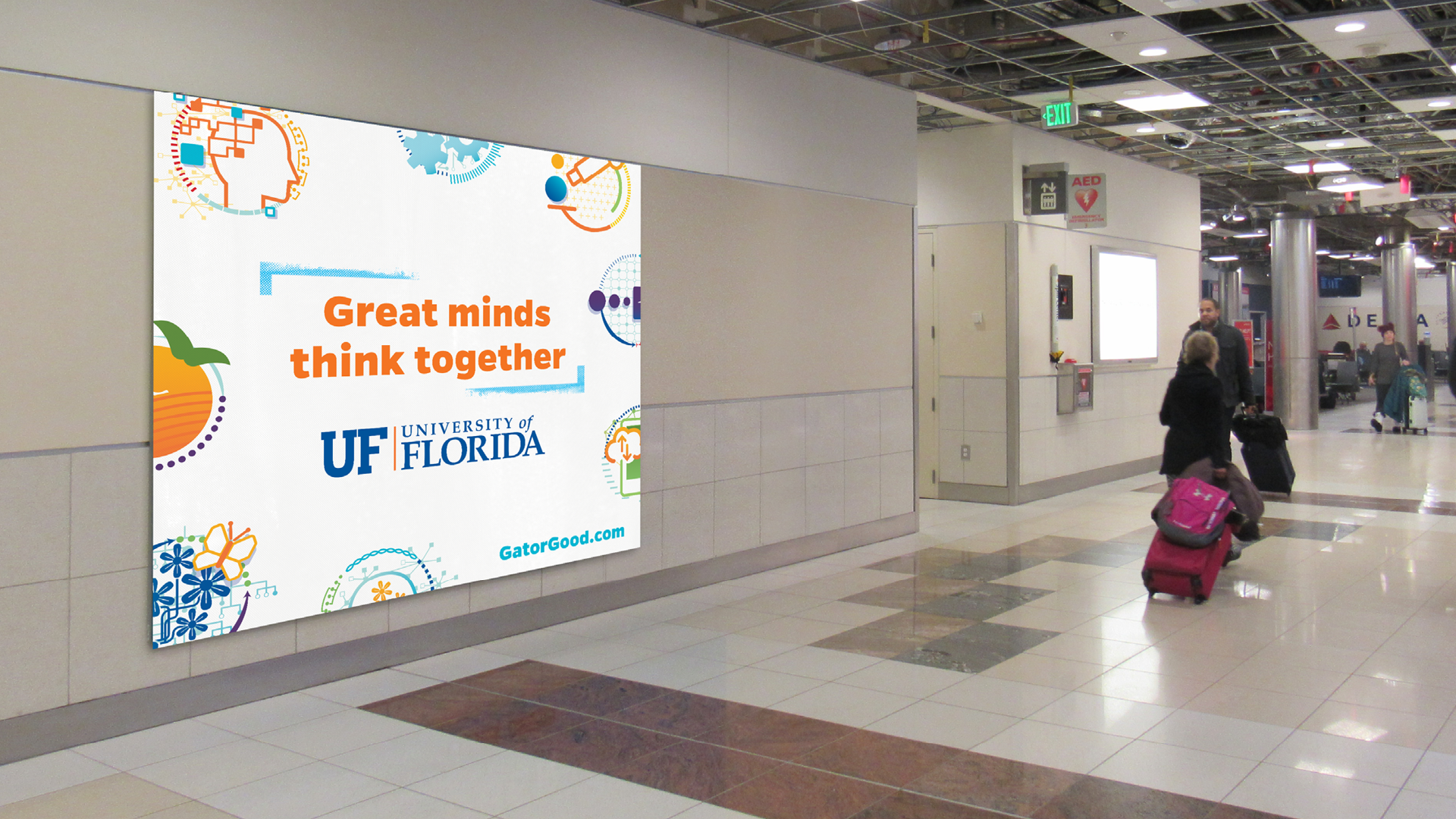
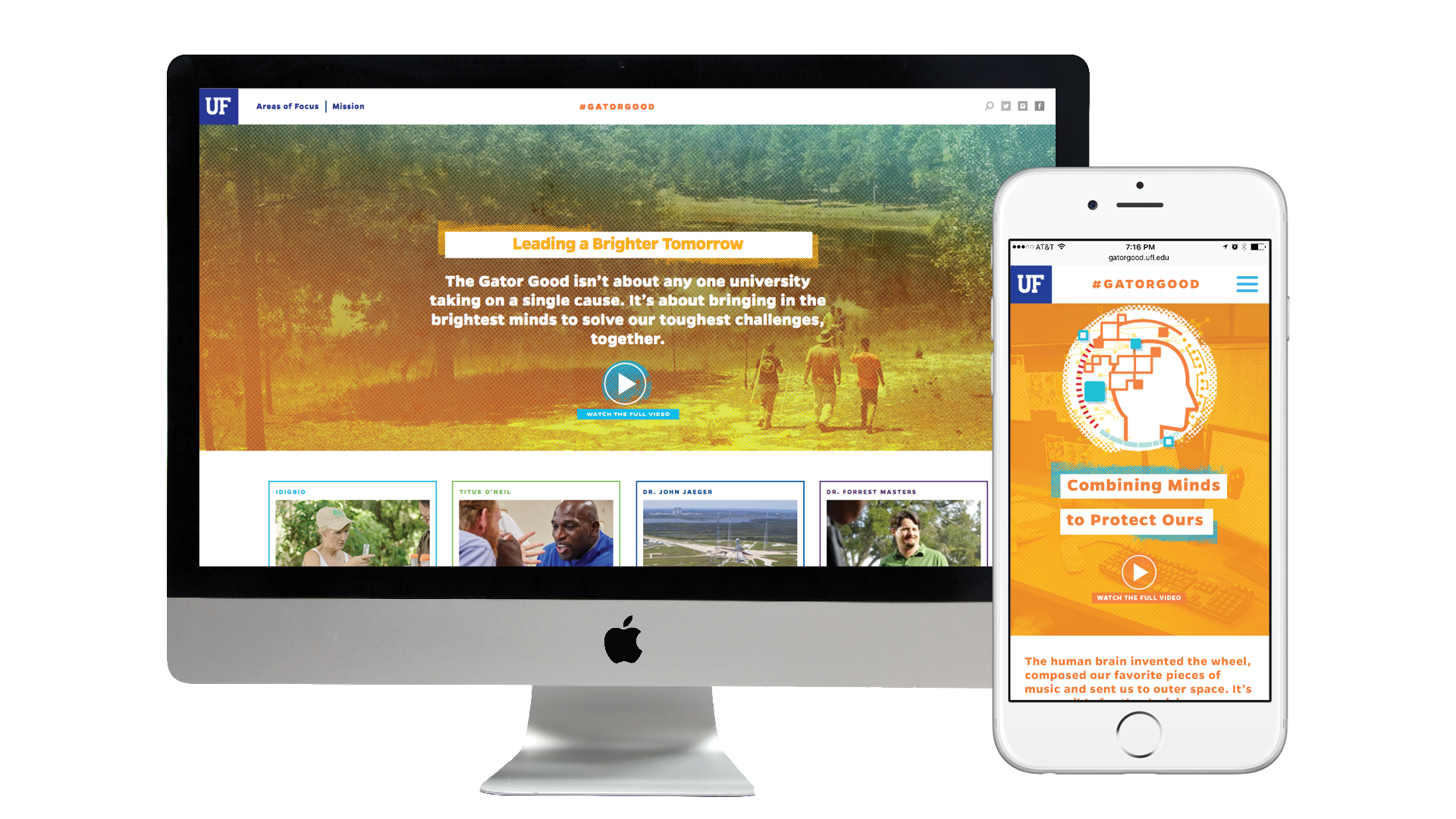
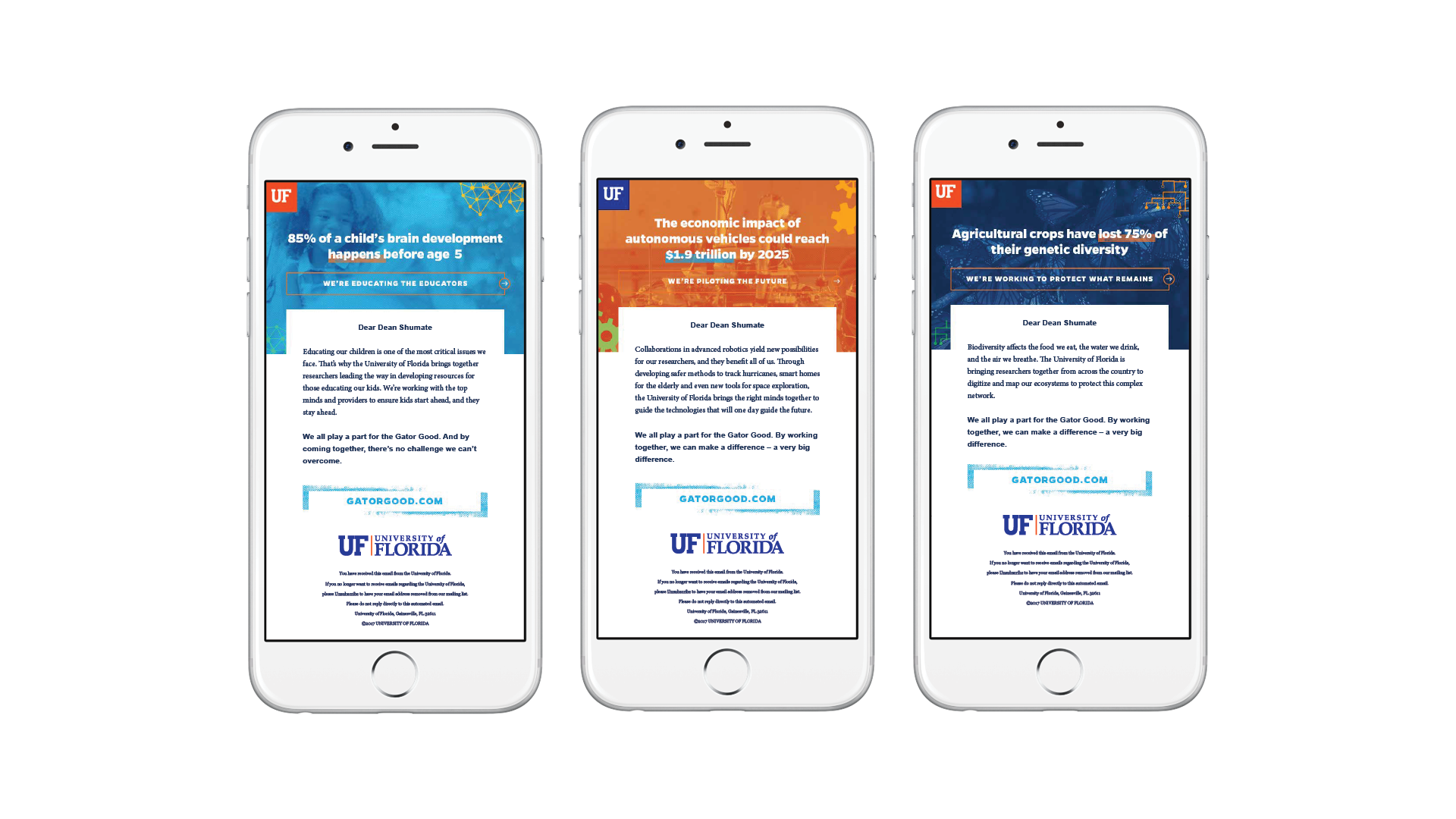
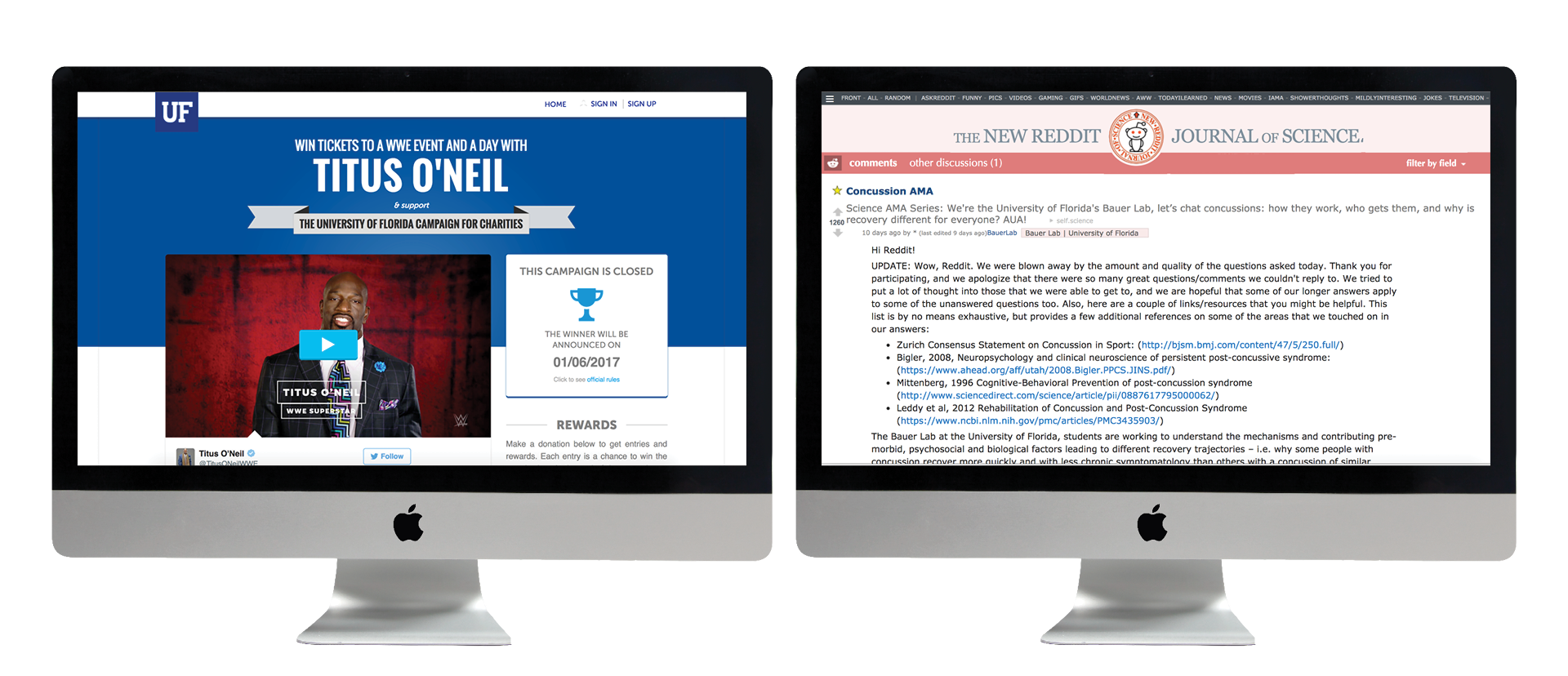
The PSA approach in this third year also focused more on the specifc causes,
while the site itself and the accompanying content plan seeded the stories of impact.
Biodiversity PSA
Brain Development PSA
Produced and designed as Associate Creative Director and Creative Director at 160over90, 2014-2017
Additional creative direction by Greg Ash. Additional design by Walton Dale.